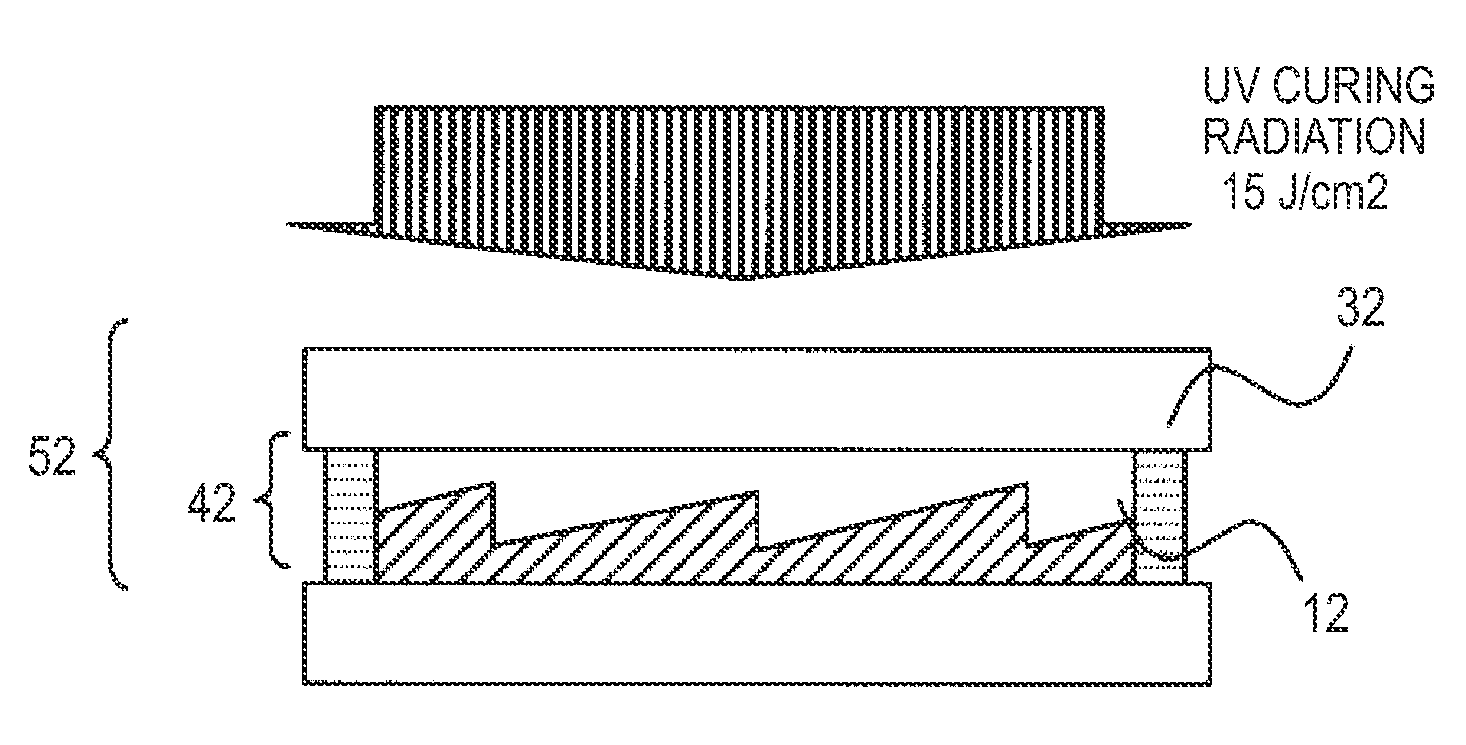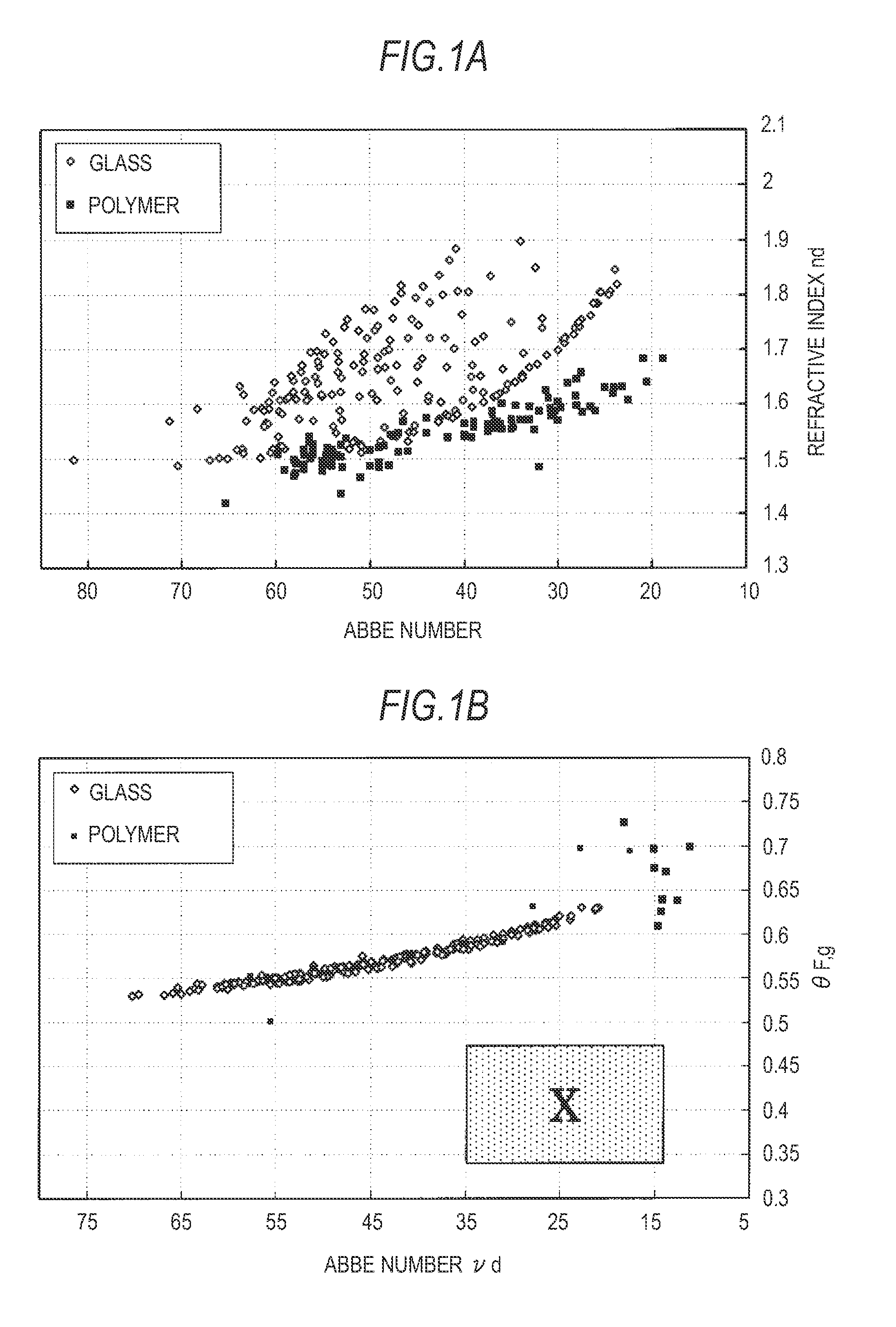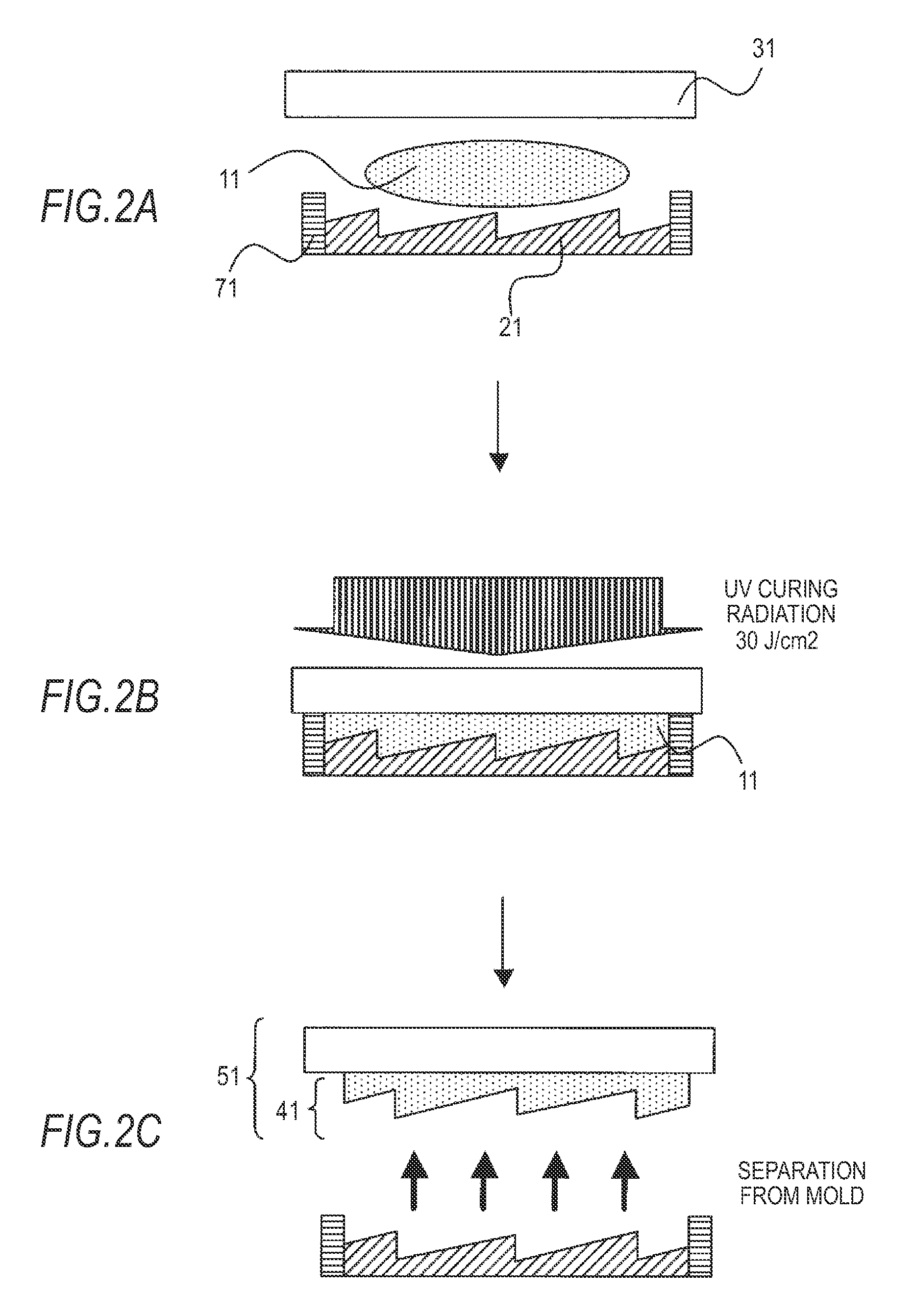Laminated diffractive optical element and resin composition therefor
a technology of diffractive optical elements and resin compositions, which is applied in the field of laminated diffractive optical elements, can solve the problems of chromatic aberration that is sometimes difficult to correct completely
- Summary
- Abstract
- Description
- Claims
- Application Information
AI Technical Summary
Benefits of technology
Problems solved by technology
Method used
Image
Examples
example 1
[0074]The configuration of the embodiment of the laminated diffractive optical element of Example 1, and a method for manufacturing the same, will be described below with reference to FIGS. 2 to 5.
[0075]First, DISPERBYK 163 as a dispersant, and fine ITO particles with a mean particle size of 20 nm, were compounded with xylene to obtain a content ratio of 1.90 wt. % and 10.55 wt. %, respectively, and the components were dissolved and dispersed. As a result, a slurry in which fine ITO particles were dispersed in a xylene solvent was obtained. A total of 3.00 g of 3-perfluorobutyl-2-hydroxypropyl acrylate and 5.25 g of 2,2,3,3,4,4,5,5-octafluorohexane 1,6-diacrylate as binder components were added to and dissolved in 50.50 g of the slurry. A total of 0.255 g of Irgacure 184 was added and dissolved as a polymerization initiator. The solvent was removed under reduced pressure with an evaporator from the solution obtained, and an optical material 11 in accordance with the present inventio...
example 2
[0082]A total of 3.00 g of 3-perfluorobutyl-2-hydroxypropyl acrylate and 5.25 g of 2,2,3,3,4,4,5,5-octafluorohexane 1,6-diacrylate as binder components were added to and dissolved in 80.70 g of the slurry prepared in Example 1. A total of 0.255 g of Irgacure 184 was added and dissolved as a polymerization initiator. The solvent was removed under reduced pressure with an evaporator from the solution obtained, and an optical material 13 in accordance with the present invention was prepared. Properties of the optical material 13 are shown in Table 1.
[0083]A diffractive optical element was produced in the same manner as in Example 1 by using the optical material 13.
[0084]An optical material 14 was prepared for producing a diffractive optical element for combining with the above-described diffractive optical element. A photocurable resin with the following optical characteristics: nd=1.5274, νd=49.82, θg, F=0.552, was added to and dissolved in a slurry obtained by dispersing Al2O3 fine p...
example 3
[0088]A total of 3.00 g of 3-perfluorobutyl-2-hydroxypropyl acrylate and 5.25 g of 2,2,3,3,4,4,5,5-octafluorohexane 1,6-diacrylate as binder components were added to and dissolved in 119.80 g of the slurry prepared in Example 1. A total of 0.255 g of Irgacure 184 was added and dissolved as a polymerization initiator. The solvent was removed under reduced pressure with an evaporator from the solution obtained, and an optical material 15 in accordance with the present invention was prepared. Properties of the optical material 15 are shown in Table 1.
[0089]A diffractive optical element was produced in the same manner as in Example 1 by using the optical material 15.
[0090]An optical material 16 was prepared for producing a diffractive optical element for combining with the above-described diffractive optical element. A photocurable resin with the following optical characteristics shown in Example 2: nd=1.5274, νd=49.82, θg, F=0.552, was added to and dissolved in a slurry obtained by dis...
PUM
| Property | Measurement | Unit |
|---|---|---|
| particle diameter | aaaaa | aaaaa |
| particle size | aaaaa | aaaaa |
| refractive index | aaaaa | aaaaa |
Abstract
Description
Claims
Application Information
 Login to View More
Login to View More - R&D
- Intellectual Property
- Life Sciences
- Materials
- Tech Scout
- Unparalleled Data Quality
- Higher Quality Content
- 60% Fewer Hallucinations
Browse by: Latest US Patents, China's latest patents, Technical Efficacy Thesaurus, Application Domain, Technology Topic, Popular Technical Reports.
© 2025 PatSnap. All rights reserved.Legal|Privacy policy|Modern Slavery Act Transparency Statement|Sitemap|About US| Contact US: help@patsnap.com



